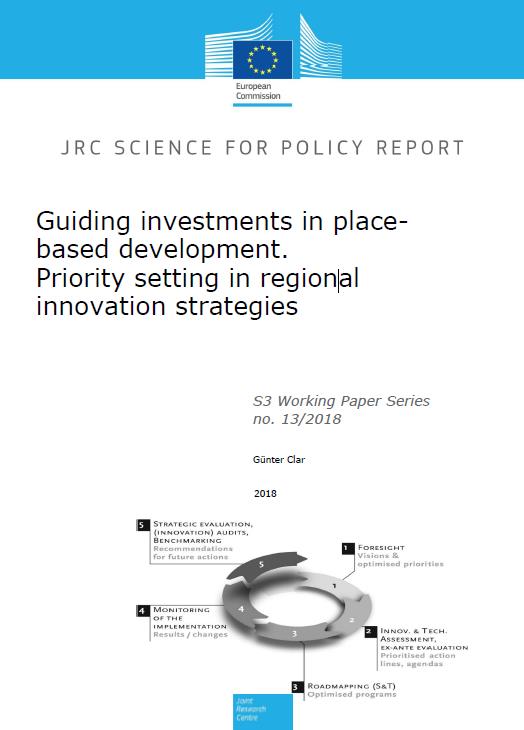Guiding investments in place-based development. Priority setting in regional innovation strategies
This report sets out to synthesise the dispersed knowledge on a range of issues relevant for the success of priority setting processes and practices in innovation policies and strategies. Outlining changing contexts, rationales and approaches of priority setting in Research and Innovation policies leads to the “new prioritisation logic” guiding RIS3 exercises. This is followed by two main lines aiming to facilitate improved priority setting: better understanding the wider innovation policy context of RIS3, and making better use of Strategic Policy Intelligence and other support tools (including learning from private sector strategies) to structure and guide policy cycles, and to implement place-appropriate policy mixes. Evidence on effective priority setting processes in RIS3-type exercises and policy recommendations complete the report.
Abstract
As the Structural Funds (ESIF) constitute a large part of the EU budget, considerable contributions to the overall EU2020 Growth Strategy are expected. In the 2014-2020 programming period, there is a strong focus on Research and Innovation (R&I) with the aim to boost ESIF impact on competitiveness and broader benefits (public and private returns) across the EU. Towards this larger aim, R&I Strategies for Smart Specialisation (RIS3) are means to concentrate investments in place-based, innovation-oriented activities, which are well positioned vis-à-vis global value chains, and also related to territorial or sectoral strategies with other regions.
Recent assessments show that the concentration of investments towards this goal has not everywhere been optimally achieved, which is often traced back to the types of priorities selected. At first sight, this can be attributed to the nature of the strategy processes, the innovation actors involved, and their methodological and strategic competences. Looking deeper, especially where Managing Authorities and ESIF applicants/recipients had little former experience with R&I priority setting, weaknesses lie in understanding state-of-the-art concepts underlying R&I strategies, in applying the broad spectrum of R&I support tools, and in the ability to guide a range of R&I related interaction processes continually and competently.
Against this backdrop, the report sets out to synthesise the dispersed knowledge on a range of issues relevant for the success of priority setting processes and practices in innovation policies and strategies. Outlining changing contexts, rationales and approaches of priority setting in R&I policies leads to the “new prioritisation logic” guiding RIS3 exercises. This is followed by two main lines aiming to facilitate improved priority setting: better understanding the wider innovation policy context of RIS3, and making better use of Strategic Policy Intelligence (SPI) and other support tools (including learning from private sector strategies) to structure and guide policy cycles, and to implement place-appropriate policy mixes. Evidence (case studies) on effective priority setting processes in RIS3-type exercises and policy recommendations complete the report.
Series
S3 Working Paper Series no. 13/2018
